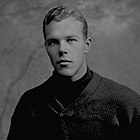1906 YEAR-IN-REVIEW
The brand-new American Intercollegiate Athletic Association entered its first year as the governing body for intercollegiate sports in 1906. Though technically in charge of all collegiate contests between its 68 member schools, the AIAA's main focus for 1906 was football. The President of the United States himself, Theodore Roosevelt, had made it plain that he saw football as part of a "strenuous life" and was vocal in pushing the AIAA to make the sport not only safer, but also more exciting. With this in mind, the AIAA introduced several new rules that changed the game forever.
Among these new rules were a slew of measures designed to make the game safer. The "flying wedge" in which groups of players from each side would crash into each other at high speed in formation (with resultant broken limbs, concussions and internal bleeding sure to follow), was outlawed as was hurdling another player. A "neutral zone" (the length of the football) was established to put a small amount of distance between the offense and defense at the line of scrimmage. The distance to gain a first down was doubled from five yards to ten, stripes were added to the field every five yards, and one other rule that would make the game more exciting, was also added: the forward pass.
Prior to 1906, football players could throw the ball - but only behind themselves (what we'd now call laterals). The new rule would allow a player to throw the ball forward, from behind the line of scrimmage, to a distance of not more than 30 yards - and an incompleted pass resulted in a 15-yard penalty to the offense. Obviously the rule has been amended (several times) since 1905, but this rule changed the very fabric of the game and opened up a multitude of strategic options for the offense.
The first pass in football history was thrown by George Fox center back Tom Webber in his team's first game, a 45-0 whitewashing of Hartford Wesleyan. The new weapon would be utilized sparingly throughout the season as coaches were slow to subject themselves to a possible 15-yard penalty. One of the best early practitioners of the forward pass was a fellow by the name Barney Wilson who was a star back for the Noble Jones College Colonels in Georgia.
There was no official national champion, nor were there any postseason "bowl" games in 1906. The Centerville Chiefs went 12-0-0 and outscored their opponents by a combined 357-22 to be retroactively named national champions by the Omni Sports Bureau in 1936. Annapolis Maritime was another powerhouse, posting an 11-1-0 record with their lone loss coming at the hands of Sadler by a score of 23-3. Both Sadler (9-0-1) and Eastern Virginia (8-0-2) finished unbeaten and both claimed the championship; Centerville, a school created in a misguided attempt to force Native American youth to accept "American" culture, was generally scorned by old Eastern institutions like Sadler, which refused to play the "Indians" thereby denying fans of the time the chance to see the sport's two best squads face each other.
Mott's All-American Team for 1906:
Backs
- Barney Wilson, Noble Jones (SR)
- William Hastings, Sadler (JR)
- Alfred Trumaine, Centerville (JR)
Ends
- Ben Rankin, Grafton (SR)
- Edgar Wesley, St. Pancras (JR)
- Thomas Neville, Annapolis Maritime (JR)
Linemen
- Otto Klemminger, Eastern Virginia (SR)
- Tim Thompson, Sadler (SR)
- Edward Ipswich, Sadler (SR)
- Adam Green, Chicago Poly (SR)
- Jack Bryant, Dickson (JR)

